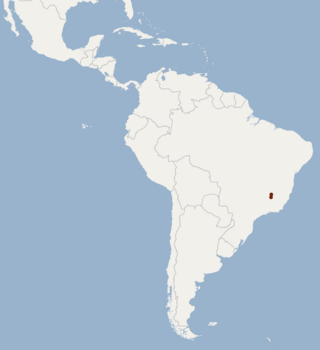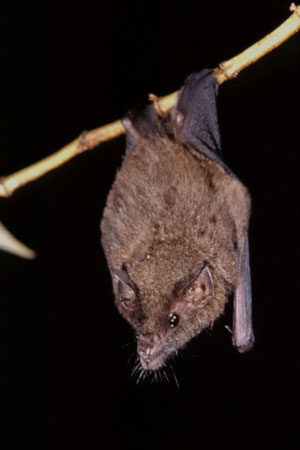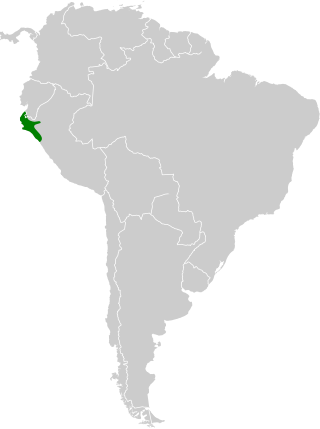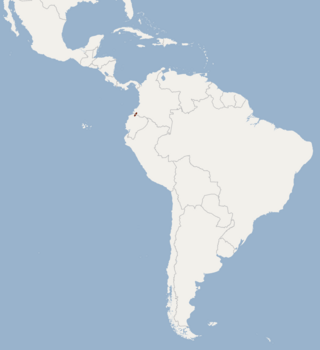
The New World leaf-nosed bats (Phyllostomidae) are bats found from southern North America to South America, specifically from the Southwest United States to northern Argentina. They are ecologically the most varied and diverse family within the order Chiroptera. Most species are insectivorous, but the phyllostomid bats include within their number true predatory species and frugivores. For example, the spectral bat, the largest bat in the Americas, eats vertebrate prey, including small, dove-sized birds. Members of this family have evolved to use food groups such as fruit, nectar, pollen, insects, frogs, other bats, and small vertebrates, and in the case of the vampire bats, even blood.

The dark long-tongued bat is a species of bat from South and Central America. It was formerly considered the only species within the genus Lichonycteris, but is now recognized as one of two species in that genus, along with the pale brown long-nosed bat. It is small species of bat, with adults weighing 6–11 g (0.21–0.39 oz) and having a total length of 46–63 mm (1.8–2.5 in).

Bokermann's nectar bat is a bat species from South America. It is endemic to Brazil. It feeds on nectar, and is listed as an endangered species.

Dekeyser's nectar bat is a bat species found in Brazil and Bolivia.

The tube-lipped nectar bat is a bat from Ecuador. It was described in 2005. It has a remarkably long tongue, which it uses to drink nectar. It additionally consumes pollen and insects.

Anoura is a genus of leaf-nosed bats from Central and South America. Anoura members lack or have a short tail, and are nectarivorous bats of small to medium size among the Phyllostomidae.

The Mexican long-tongued bat is a species of bat in the family Phyllostomidae. It is the only species within the genus Choeronycteris. It is found in El Salvador, Guatemala, Honduras, Mexico, and the United States.

The western nectar bat is a species of bat in the family Phyllostomidae. It is found in Ecuador and Peru.

Peracchi's nectar bat is a species of nectar-feeding bat in the family Phyllostomidae. It was first described from the Atlantic Forest in southeastern Brazil.

Lonchophylla inexpectata is a species of leaf-nosed bat found in Brazil.
Lonchophylla concava is a species of leaf-nosed bat found in Central and South America. It was long considered a synonym of Goldman's nectar bat, though is now recognized as distinct. It consumes nectar and pollen.

Dryadonycteris capixaba is a species of leaf-nosed bat found in South America. It is the only species within the genus Dryadonycteris.

The Chocoan long-tongued bat is a species of bat found in South America. It was described as a new species in 2004.

Orcés’s long-tongued bat is a species of leaf-nosed bat found in Ecuador.
Lonchophylla orienticollina is a species of bat found in Colombia, Venezuela, and Ecuador.
Lonchophylla fornicata is a species of bat found in South America.
Cadena's long-tongued bat is a bat species from Colombia and Ecuador. It was originally described in the genus Lonchophylla, but was moved to Hsunycteris when the latter was erected in 2014.
Patton's long-tongued bat is a bat species from Bolivia, Colombia, Ecuador, and Peru. It was originally described in the genus Lonchophylla, but was moved to Hsunycteris when the latter was erected in 2014.













